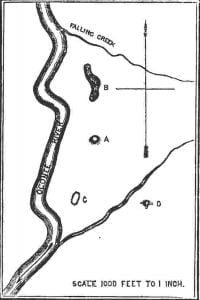Bird-Shaped Stone Tumult in Putnam County, Georgia
The existence of curious effigy-mounds in the southern counties of Wisconsin was noted by Mr. Lapham in 1836. Subsequently, Mr. Taylor, Professor Locke, and Messrs. Squier and Davis furnished additional information in regard to the distinctive characteristics of these unusual structures. It was reserved, however, for the Smithsonian Institution, in the seventh volume of its “Contributions,” to furnish, from the pen of Mr. Lapham, the most complete account of these interesting remains. They were quite numerous along the great Indian trail or war-path from Lake Michigan, near Milwaukee, to the Mississippi above the Prairie du Chien. Generally representing men, buffaloes, … Read more



